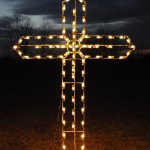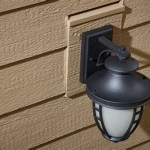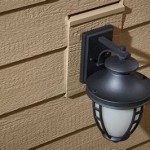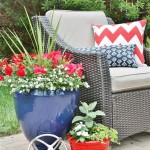Outdoor Plants That Thrive in Low Light Areas
Many gardens feature areas that receive limited sunlight. These shady spots, often located near buildings, beneath dense trees, or on the north side of structures, can present challenges for gardeners seeking to cultivate vibrant and flourishing plant life. However, a variety of outdoor plants are well-adapted to lower light conditions, offering opportunities to create beautiful and diverse gardens even where direct sunlight is scarce. Understanding these plants and their specific needs is crucial for successful landscaping in these settings.
The term "low light" is relative and it's important to understand what this means in the context of outdoor gardening. Generally, low light refers to areas that receive less than three hours of direct sunlight per day. This might include dappled sunlight filtering through tree canopies, bright indirect light, or full shade which receives virtually no direct sunlight. The specific type of low light will influence which plants are best suited for a given location. Some plants tolerate low light, while others actively prefer it. Choosing plants that are appropriately matched to the light conditions is essential for their health and vigor.
Understanding the Challenges of Low Light Environments
Low light conditions present several challenges for plant growth. Sunlight is the primary energy source for photosynthesis, the process by which plants convert carbon dioxide and water into sugars for fuel. Reduced sunlight translates to reduced photosynthetic activity, which can lead to slower growth, weaker stems, and less vibrant foliage. Plants in low light environments may also be more susceptible to pests and diseases, as their overall health is compromised.
Another challenge is maintaining adequate soil moisture. While low light areas tend to remain cooler and retain moisture for longer, the lack of direct sunlight can also inhibit evaporation. This can lead to waterlogged soil, which can damage roots and create favorable conditions for fungal diseases. Proper soil drainage is therefore crucial in low light gardens. Amending the soil with organic matter can improve drainage and aeration, creating a healthier environment for plant roots.
Competition from established trees is another factor to consider. Trees can not only block sunlight but also compete with smaller plants for water and nutrients. When planting beneath trees, it's important to choose plants that are tolerant of root competition and can thrive in the nutrient-poor soil often found in these areas. It may also be necessary to supplement the soil with fertilizer to ensure that plants receive adequate nutrients.
Selecting Appropriate Low Light Plants
Choosing the right plants is the most important step in creating a successful low light garden. A wide range of plants are well-suited to these conditions, offering a variety of textures, colors, and growth habits. When selecting plants, consider the specific light conditions, soil type, and desired aesthetic. Some popular choices for low light gardens include hostas, ferns, shade-tolerant groundcovers, and certain flowering shrubs.
Hostas are a classic choice for shade gardens, prized for their attractive foliage and tolerance of low light. They come in a wide range of sizes, shapes, and colors, from small, delicate varieties to large, bold specimens. Hostas thrive in moist, well-drained soil and prefer protection from direct sunlight. Some varieties are more slug-resistant than others, so it's important to choose varieties that are appropriate for the local climate and potential pest problems.
Ferns are another excellent choice for low light areas, offering a variety of textures and forms. They prefer moist, shady conditions and thrive in rich, organic soil. Many different types of ferns are suitable for outdoor planting, including maidenhair ferns, ostrich ferns, and Japanese painted ferns. Ferns can add a touch of elegance and tranquility to a shade garden.
Shade-tolerant groundcovers are useful for filling in bare areas and preventing weed growth. Some popular choices include vinca minor, pachysandra, and creeping jenny. These plants spread quickly and form a dense mat of foliage, creating a lush and attractive groundcover. They are also relatively low-maintenance and can tolerate a wide range of soil conditions.
Several flowering shrubs can also thrive in low light conditions. Azaleas and rhododendrons are popular choices, offering vibrant blooms in spring. Camellias are another option, providing beautiful flowers in winter and early spring. These shrubs prefer acidic soil and require regular watering, especially during dry periods.
Essential Care Tips for Low Light Gardens
Even with the right plant selections, proper care is essential for maintaining a healthy and thriving low light garden. This includes watering, fertilizing, mulching, and pest control. Adjusting standard gardening practices to the specific needs of low light plants can make a significant difference in their overall health and appearance.
Watering is crucial, but it's important to avoid overwatering. Low light areas tend to retain moisture for longer, so plants need less frequent watering than those in sunny locations. Check the soil moisture regularly and water only when the top inch or two feels dry to the touch. Avoid watering the foliage directly, as this can promote fungal diseases. Instead, water at the base of the plant, ensuring that the soil is thoroughly moistened.
Fertilizing can help to promote healthy growth, but it's important to use a fertilizer that is specifically formulated for shade-loving plants. These fertilizers typically have a lower nitrogen content, which can help to prevent leggy growth and promote stronger stems. Apply fertilizer in spring and early summer, following the instructions on the product label. Avoid fertilizing in late summer or fall, as this can encourage new growth that is susceptible to frost damage.
Mulching is beneficial for retaining moisture, suppressing weed growth, and improving soil health. Apply a layer of organic mulch, such as shredded bark or compost, around the base of plants, keeping it away from the stems to prevent rot. Replenish the mulch as needed to maintain a consistent layer. Mulching can also help to regulate soil temperature, protecting plant roots from extreme heat or cold.
Pest control is another important aspect of garden maintenance. Low light plants are often more susceptible to pests and diseases than those in sunny locations, so it's important to monitor plants regularly for signs of trouble. Common pests include slugs, snails, aphids, and spider mites. Diseases such as powdery mildew and fungal leaf spots can also be a problem. Treat pests and diseases promptly with appropriate organic or chemical controls. Good air circulation can help to prevent fungal diseases, so avoid overcrowding plants.
In conclusion, creating a flourishing garden in low light areas is achievable with careful planning and appropriate plant selections. By understanding the challenges of these environments and providing proper care, gardeners can transform shady spots into vibrant and beautiful spaces. The key is to choose plants that are well-suited to the light conditions, maintain proper soil drainage, and provide regular watering, fertilizing, and pest control. With a little effort and attention, even the shadiest corners of the garden can become havens of lush greenery and colorful blooms.

17 Low Light Outdoor Plants That Thrive Even In The Shade

25 Best Shade Perennials Perennial Flowers For

15 Of The Best Herbs That Grow Well In Shade Gardens

17 Best Ground Cover Plants For Shade Get Busy Gardening

10 Low Light Plants That Grow In The Dark Planters Etc
Diarmuid Gavin S Guide To The Plants That Will Thrive In Low Light Independent Ie

24 Air Purifying Plants That Thrive Without Sunlight Gardening

17 Best Outdoor Foliage Plants To Grow Garden Design

Out Of The Shadows Plants That Thrive In Shady Gardens Guardian

24 Best Low Maintenance Flowers And Plants Outdoors







